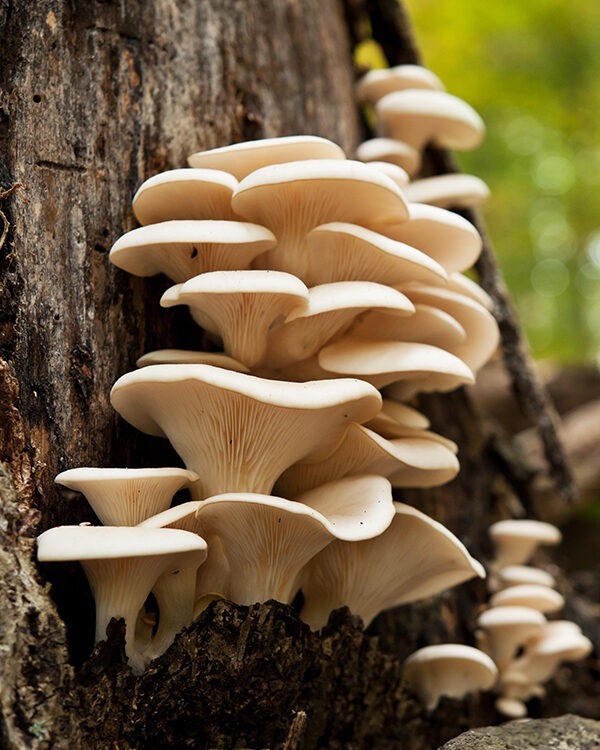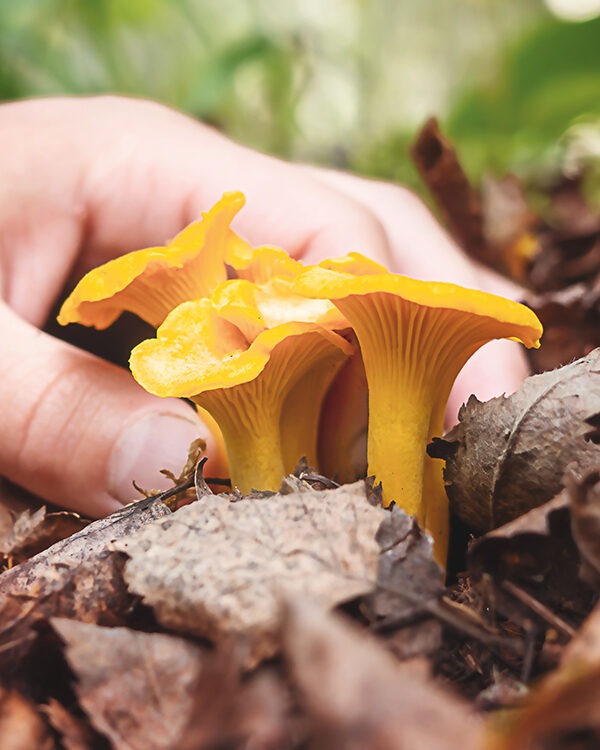San Antonio’s native mycelial might turn your yard into the happiest (and healthiest) fungus festival this side of the Alamo.
Imagine stepping out into your backyard and discovering a hidden network underneath your feet, with silvery threads of native mycelium hard at work building alliances, trading, defending and improving the environment all at once.
In our local toasty zone # 9 with clay‑loam soils, there are two native rock stars in the mushroom kingdom — oyster mushrooms and chanterelles — that can turn your lawn, roses and shade trees into a verdant wonderland.
What? No fungi hanging around your landscape? Here’s how to bring some mycelial magic to your very own garden.
Oyster mushrooms: the lawn’s best friend
Despite their elegant frilly caps, Pleurotus ostreatus are hardcore recyclers. They thrive on dead organic matter — fallen leaves, grass clippings and old mulch. Oh, and they even clean up old harmful pesticides and can eat plastics.
They also:
 Boost soil porosity
Boost soil porosity
Their mycelial networks carve micro‑channels that improve drainage during summer storms and hold moisture during our hottest months.- Create nutrient alchemy
By breaking down lignin and cellulose, they convert yard waste into plant‑friendly nutrients, reducing your need for synthetic fertilizers. - Thwart turf trouble
A healthy mycelial web helps crowd out pathogenic fungi and even deters root‑invading grubs by fostering competitive microbial communities.
How to deploy:
- Scatter small oyster‑spawned straw blocks over your lawn after aeration.
- Lightly rake them in, water deeply and watch the mycelium colonize.
- Repeat in early fall and late spring for year‑round benefits.
Chanterelle mycelium, aka tree whisperers
Chanterelles (Cantharellus spp.), the golden beauties you dream of, aren’t just for mushroom hunters. They’re ectomycorrhizal maestros that team up with tree roots to:
 Expand the root zone
Expand the root zone
Mycelial hyphae can explore up to 100 times more soil than roots alone, tapping distant moisture pockets during dry spells.- Supercharge nutrient uptake
Trees share photosynthate sugars in exchange for boosted phosphorus and micronutrient delivery — ideal for live oaks, pecans and desert willows. - Enhance disease resistance
A robust chanterelle network primes tree immune systems, making them less vulnerable to canker, wilt and soil‑borne pathogens.
How to invite them in:
- Dig shallow trenches around drip lines and mix in native soil, wood chips and chanterelle‑inoculated substrate.
- Apply a 2- to 3-inch layer of mulch plus a simple moisture meter to ensure mycelial networks don’t dry out.
- Keep soil between 6.0-7.0 pH for optimal fungal growth. In no time, you’ll see the first fairy rings, or at least healthier, deeper‑green foliage.
Once you’ve established your mycelium you can start directing your graywater or rain‑garden overflow to these areas. Let the mycelium masters in the art of water filtration and nutrient cycling do the rest.
Seek out other San Antonio fungi fans
- Oyster mushroom straw blocks: Local donation stations or local mushroom suppliers
- Chanterelle mycelium cultures: Specialty mycological societies and nurseries carry region‑adapted strains.
Fairy‑tale finish (minus the zombies)
Yes, the sight of mushrooms can be as enchanting as a fairy ring. But armed with oyster and chanterelle mycelium, your garden becomes more than magical. It becomes self‑sustaining, resilient and downright lush. A thriving, eco‑friendly landscape that even gnomes would envy.
Now go forth, inoculate boldly and let San Antonio’s native mycelial might turn your yard into the happiest (and healthiest) fungus festival this side of the Alamo!
Fun(gi) fact: One of the largest living organisms on the planet is a honey fungus (Armillaria ostoyae). Measuring about 3.7 square miles, this “humongous fungus” is in Oregon’s Malheur National Forest.


